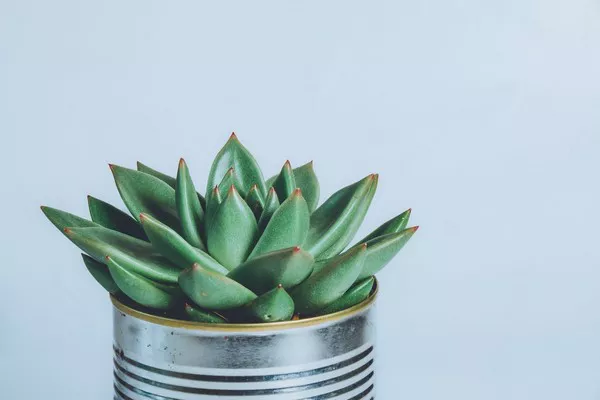Succulents, with their captivating forms and resilience, have become a staple in both indoor and outdoor gardening. These water-storing plants have gained popularity due to their adaptability and unique aesthetic appeal. To ensure your succulents flourish and continue to bring beauty to your spaces, it’s essential to understand their specific care requirements. In this comprehensive guide, we explore the world of succulent care, covering everything from light and water needs to soil and propagation techniques.
The Fascination of Succulents
Before delving into the care aspects, let’s acquaint ourselves with the allure of succulents. Succulents encompass a diverse group of plants characterized by their thick, fleshy leaves, stems, or roots that store water. This water-storing adaptation allows succulents to thrive in arid conditions, making them suitable for regions with limited rainfall.
1. Succulent Care: The Basics
Succulent care involves understanding and catering to the specific needs of these plants. Here are the fundamental aspects to consider:
Light Requirements: Succulents generally prefer bright, indirect sunlight. Place them near windows where they receive adequate light without being exposed to harsh, direct sunlight for extended periods. Rotate the pots periodically to ensure even growth.
Watering Guidelines: One of the most critical aspects of succulent care is proper watering. Unlike many other plants, succulents thrive when the soil dries out between waterings. Water the plants thoroughly, allowing excess water to drain out of the pot. Be cautious of overwatering, as this can lead to root rot.
Well-Draining Soil: Succulents require soil that provides excellent drainage. You can either purchase cactus or succulent-specific soil mixes or create your own by amending regular potting soil with sand, perlite, or gravel.
Container Choice: Select pots with drainage holes to prevent water from accumulating at the bottom. The size of the pot should accommodate the growth of the succulent and allow for proper root development.
Temperature Considerations: Succulents generally prefer warmer temperatures but can tolerate a range of conditions. Protect them from frost, as extreme cold can damage or kill the plants.
2. Succulent Care in Detail
Now, let’s delve into the specific care details that ensure your succulents thrive:
Watering Techniques: Rather than adhering to a strict watering schedule, it’s best to water succulents when the top inch of the soil is dry. Water thoroughly until you see water draining from the bottom of the pot. During the growing season (spring and summer), water more frequently, but reduce watering during the dormant period (fall and winter).
Avoid Overwatering: Overwatering is a common mistake that can lead to root rot and other issues. If you’re unsure whether to water, it’s better to wait a bit longer than to water too soon. Remember that it’s easier to revive an underwatered succulent than to save one suffering from overwatering.
Choosing the Right Pot: Opt for pots with drainage holes to prevent water from accumulating at the bottom. A well-draining potting mix coupled with proper drainage ensures that the roots don’t sit in water, promoting healthy growth.
Providing Adequate Light: While succulents enjoy sunlight, be cautious of intense, direct sunlight that can scorch their leaves. If you’re growing succulents indoors, place them near windows with filtered light. Outdoors, provide shade during the hottest part of the day.
Pruning and Maintenance: Remove dead or dried leaves to prevent mold and improve the overall appearance of the plant. Pruning can also encourage branching and fuller growth.
3. Advanced Succulent Care: Propagation and Growth
Taking your succulent care to the next level involves propagation and encouraging growth:
Propagating Succulents: Succulents can be propagated through various methods, including leaf cuttings, stem cuttings, and offsets (pups). Each method has its specific requirements and steps, but all generally involve allowing the cutting to callous before planting it in well-draining soil.
Encouraging Growth: If you’re aiming for larger or bushier succulents, you can pinch or trim the tips of the plants. This encourages branching and creates a fuller appearance.
4. Common Challenges and Troubleshooting
Succulents are relatively low-maintenance, but challenges can arise. Here’s how to address common issues:
Overwatering: If you notice yellowing leaves, wilting, or soggy soil, your succulent may be suffering from overwatering. Allow the soil to dry out completely before watering again.
Underwatering: Wrinkled or shriveled leaves are signs of underwatering. Give the succulent a thorough watering and adjust your routine.
Pests: Common pests include aphids, mealybugs, and scale insects. Treat infestations promptly with insecticidal soap or neem oil, ensuring to cover all affected areas.
Leggy Growth: Insufficient light can cause succulents to grow tall and leggy. Move them to a brighter location to encourage more compact growth.
Conclusion
Caring for succulents goes beyond simply keeping them alive; it’s about creating an environment in which they can thrive and display their unique beauty. By mastering the basics of succulent care, you provide these plants with the conditions they need to flourish and delight you with their elegance. Remember that every succulent is unique, so observation, adjustment, and a willingness to learn will lead to a garden that’s not only visually appealing but also a testament to your attentive care.


